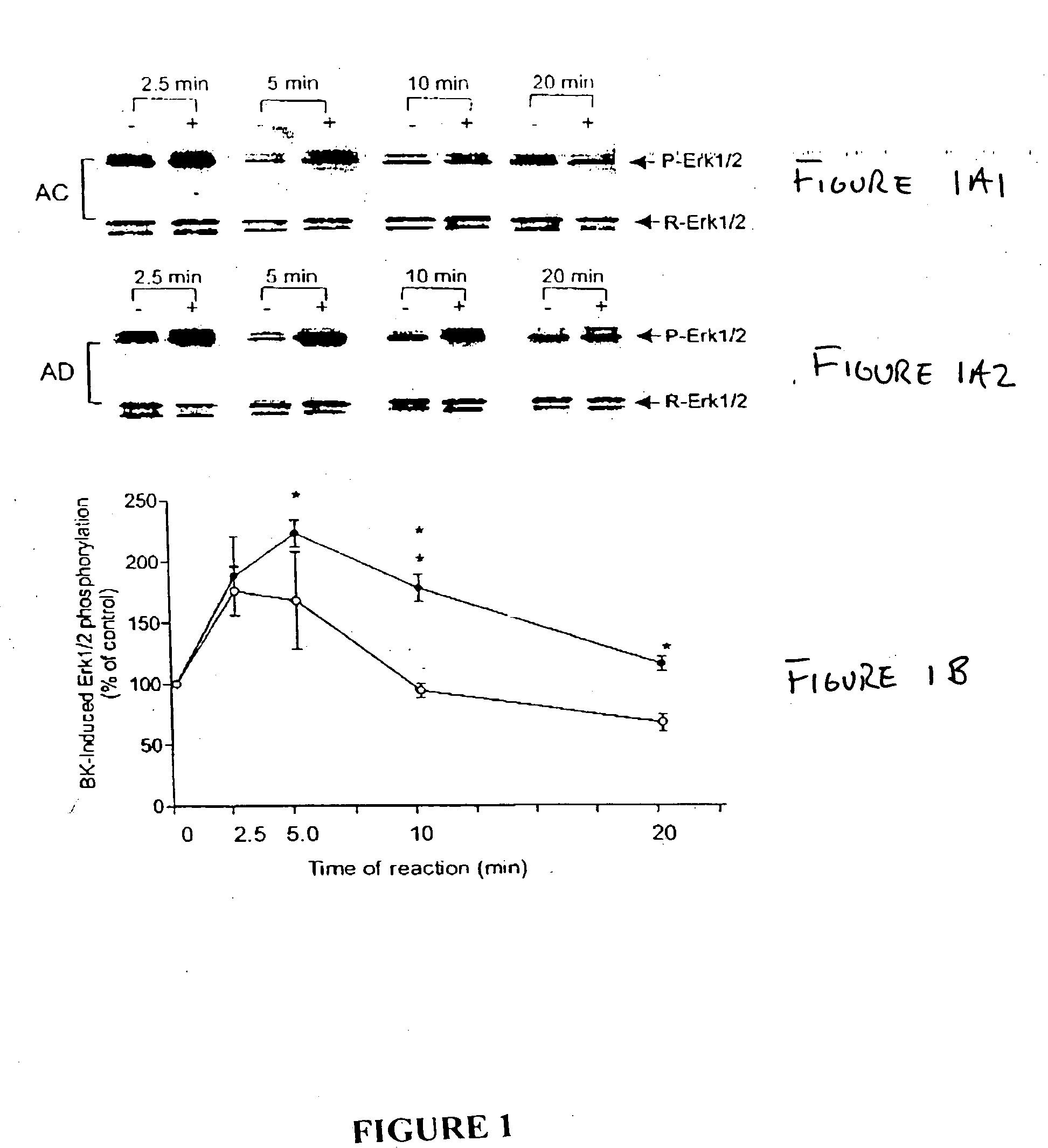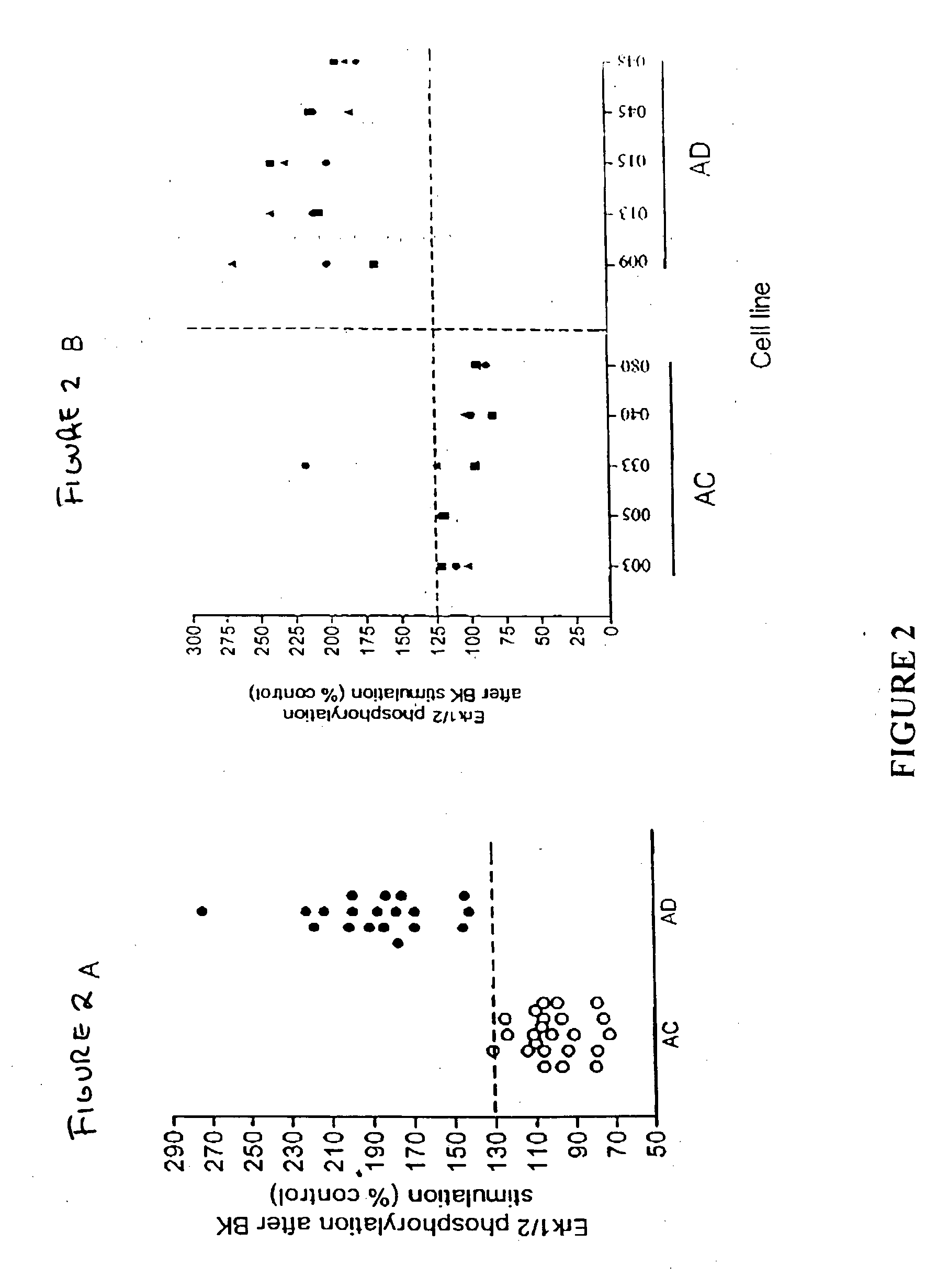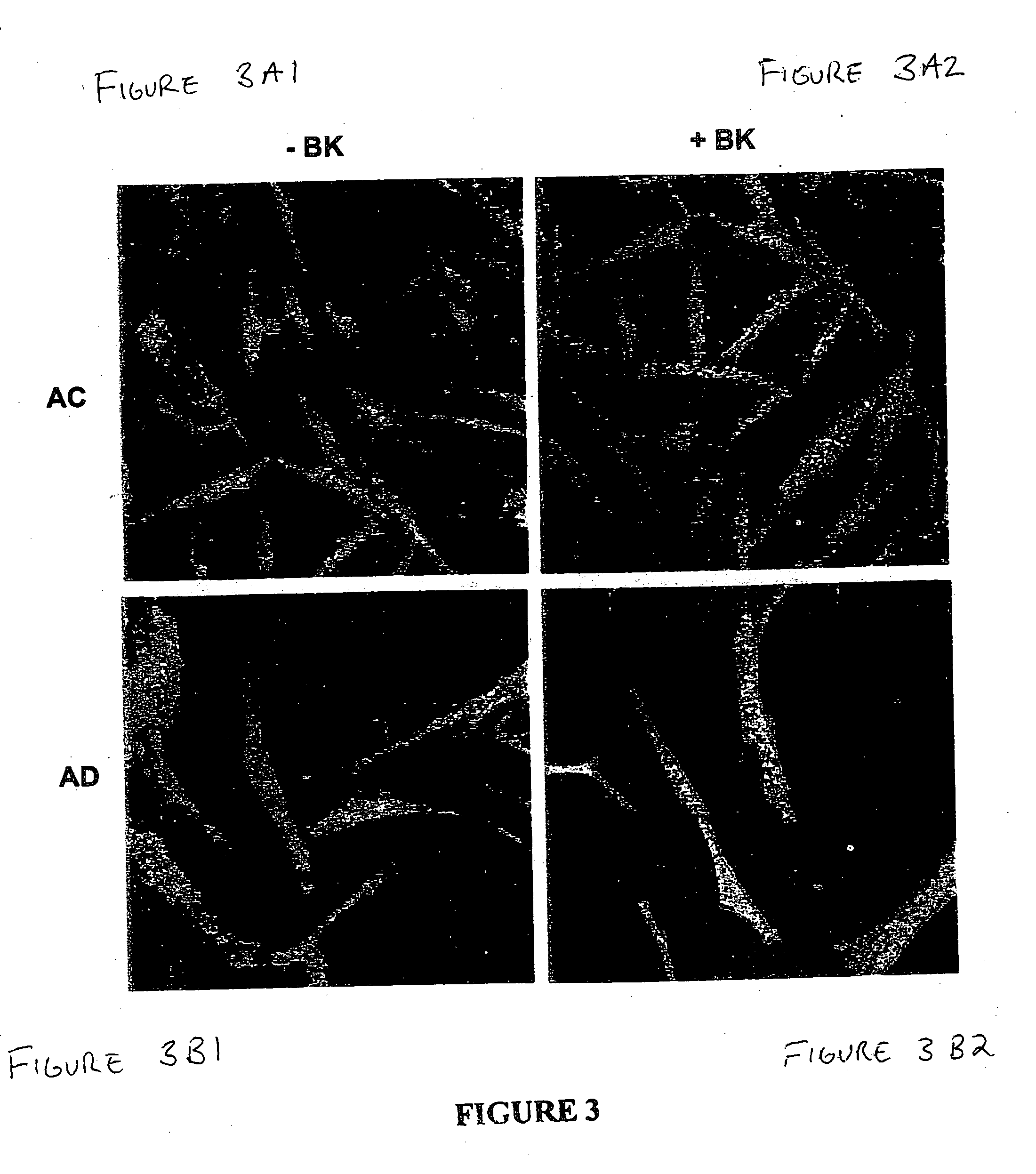Alzheimer's disease diagnosis based on mitogen-activated protein kinase phosphorylation
a technology of mitogen-activated protein and diagnosis of alzheimer's disease, which is applied in the direction of instruments, drug compositions, boron compound active ingredients, etc., can solve the problems of phosphorylation or dephosphorylation that disrupt biochemical pathways and multiple cellular functions, and achieve the effect of increasing the amount and/or duration of phosphorylation of indicator proteins
- Summary
- Abstract
- Description
- Claims
- Application Information
AI Technical Summary
Benefits of technology
Problems solved by technology
Method used
Image
Examples
example i
The present study used skin fibroblasts from 20 AD patients with ages ranging from 52-67 years and from 22 age-matched controls. Some of the samples were previously banked cells, while others were freshly collected and cultured from human skin.
Materials and Methods
Banked skin fibroblasts from familial (FAD) and nonfamilial (nFAD) AD patients and from the age-matched controls (AC) were purchased from the Coriell Institute for Medical Research. The medium was Dulbecco's modified Eagle's medium (DMEM; Gibco BRL) supplemented with fetal bovine serum (FBS; Bio Fluids). Bradykinin, diphenylboric acid 2-aminoethyl ester (2ABP), protease and phosphatase inhibitor cocktails were from Sigma; bisindolylmaleimide-1 (BiSM-1) and LY294002 were from Alexis; PP1 was from Dr Anthony Bishop, Princeton University. Anti Phospho-Erk1 / 2, anti-phospho-CREB, and anti-CREB antibodies were from Cell Signaling Technology. Anti-Erk1 / 2 antibody was from Upstate Biotechnology. 4-20% SDS-mini gels were from ...
example 2
Using skin fibroblasts from individuals with Huntington's dementia (HD), tests were conducted to determine whether the BK-induced prolonged Erk1 / 2 activity was AD specific. FIG. 8 represents the effect of bradykinin on phosphorylation of Erk1 / 2 on fibroblasts. N=4 and P=0.39, t test. The HD cells were treated with 10 nM BK for 10 minutes. FIG. 8 shows that when HD cells were treated with 10 nM BK for 10 minutes, the phosphorylation levels of Erk1 / 2 were not different from that of the age-matched controls indicating that the BK-induced enhancement of Erk1 / 2 activity is not present in Huntington's dementia. Thus, a MAP kinase assay for Alzheimer's disease according to the invention gives a negative diagnosis for Huntington's dementia, showing that the assay is specific to Alzheimer's.
PUM
| Property | Measurement | Unit |
|---|---|---|
| time | aaaaa | aaaaa |
| time | aaaaa | aaaaa |
| chemiluminescence assay | aaaaa | aaaaa |
Abstract
Description
Claims
Application Information
 Login to View More
Login to View More - R&D
- Intellectual Property
- Life Sciences
- Materials
- Tech Scout
- Unparalleled Data Quality
- Higher Quality Content
- 60% Fewer Hallucinations
Browse by: Latest US Patents, China's latest patents, Technical Efficacy Thesaurus, Application Domain, Technology Topic, Popular Technical Reports.
© 2025 PatSnap. All rights reserved.Legal|Privacy policy|Modern Slavery Act Transparency Statement|Sitemap|About US| Contact US: help@patsnap.com



